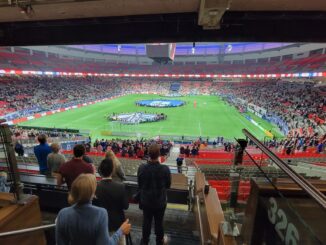Few US public schools implemented high-cost ventilation strategies for COVID-19
During the COVID-19 pandemic, most US public schools implemented lower cost ventilation strategies like moving activities outdoors, but far fewer implemented higher cost strategies like replacing HVAC systems, a survey found.
Additionally, rural and mid-poverty K-12 public schools were less likely to report using the resource-intensive ventilation strategies during a recent wave of the pandemic, according to results published in Morbidity and Mortality Weekly Report (MMWR).
Ventilation can reduce concentrations of infectious aerosols and the amount of time that students and staff are exposed to them, and it is linked to a lower COVID-19 incidence, the researchers said.
“Whereas ambient wind currents effectively dissipate SARS-CoV-2 outdoors, ventilation systems provide protective airflow and filtration indoors,” they wrote.
Researchers examined reported ventilation improvement strategies used in K-12 public schools during a COVID-19 wave lasting from February 14 to March 27, 2022, using data from 420 schools enrolled in the National School COVID-19 Prevention Study. They separated the schools into low-, mid-, or high-poverty categories, depending on the percentage of their students eligible for free or reduced-price lunches. Schools were categorized either as residing in a city, a suburb, a town, or a rural area.
Schools most frequently reported using lower cost strategies, including relocating activities outdoors (73.6%); inspecting existing HVAC systems (70.5%); and keeping doors (67.3%) and windows open (67.2%). About 37% of the schools used fans to increase effectiveness of open windows.
Among higher cost strategies, only 38.5% of schools had replaced or upgraded their HVAC systems since the beginning of the pandemic, and less than 30% of schools used HEPA filtration systems in classrooms (28.2%) or eating areas (29.8%).
Rural and mid-poverty schools were less likely to use portable HEPA filters, and less likely than their high-poverty level counterparts to have upgraded or replaced HVAC systems (32.4% vs. 48.8%).
“Differences by locale and school poverty level in implementing more resource-intensive strategies might be due to supply chain challenges, differences in school or community resources, or accessibility of technical assistance and support for applying to available sources of funding,” the researchers wrote.
“However, mid-poverty schools might have been least likely to implement these strategies because higher poverty schools might have had more experience in accessing and using federal funds, and lower poverty schools might have been able to implement some of these strategies without additional government support,” they wrote.
The researchers concluded that additional efforts would be needed to ensure that all schools could access and use resources for the ventilation improvements.
“Ensuring use of ventilation improvement resources might reduce transmission of SARS-CoV-2 and other infectious diseases in schools,” they wrote. “Focusing support on schools least likely to have implemented resource-intensive ventilation strategies might facilitate equitable implementation.” ■


